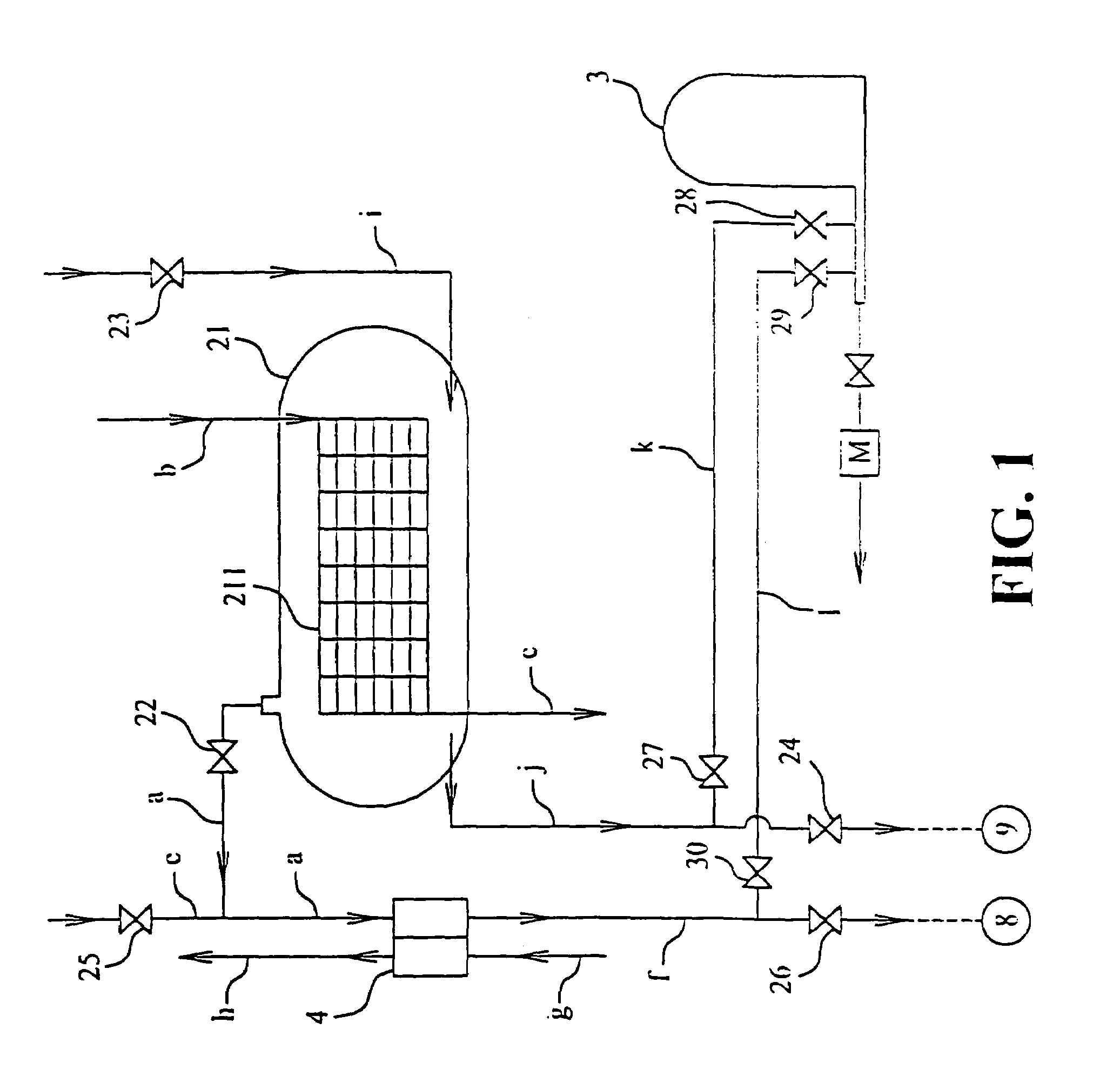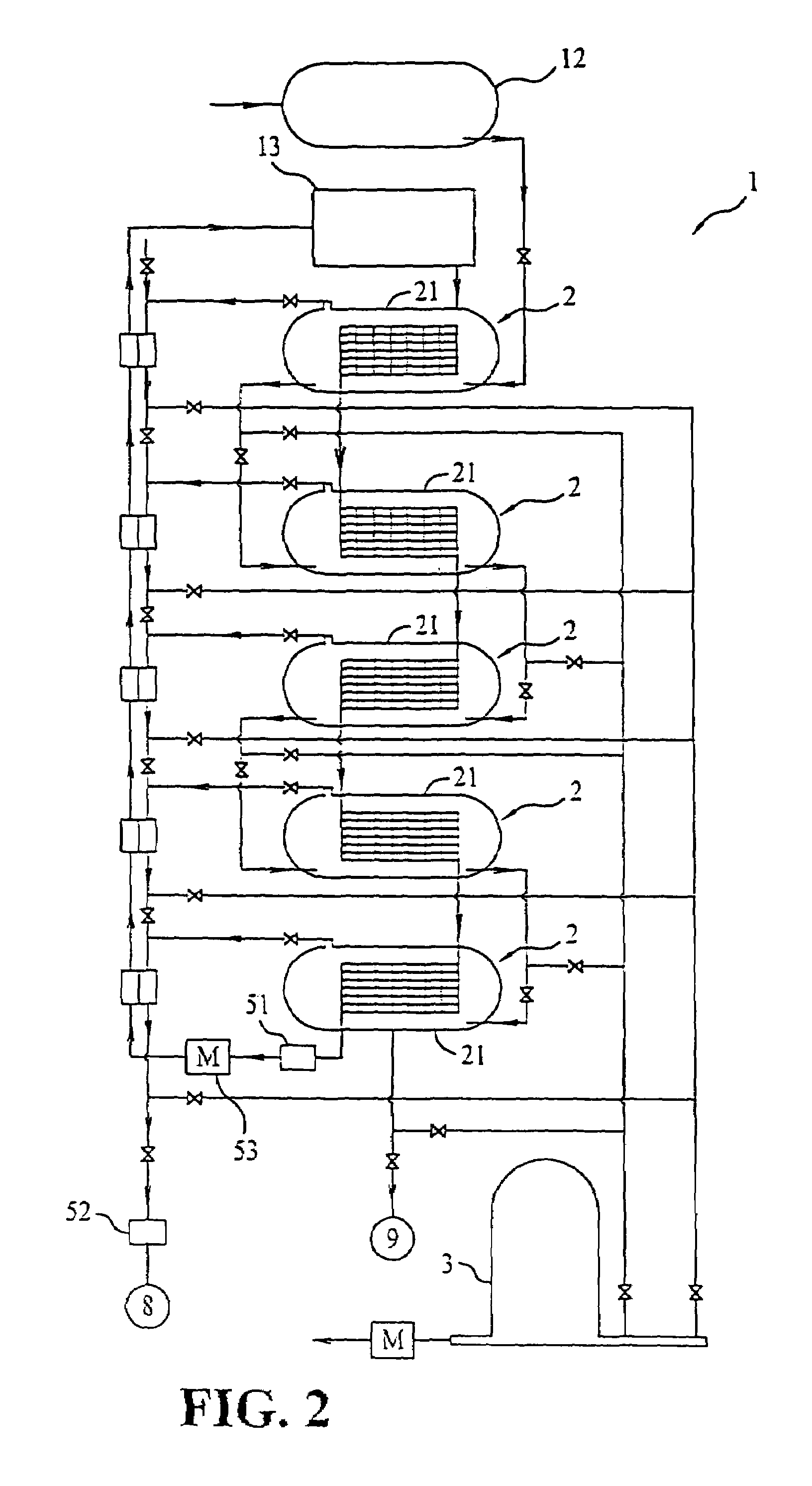Multi-stage vacuum distilling, cooling and freezing processes and apparatuses for solution separation and seawater desalination
a vacuum distilling and seawater desalination technology, applied in vacuum distillation separation, domestic cooling apparatus, separation processes, etc., can solve the problems of large amount of energy consumed, uneconomically consumed, necessary and highly uneconomically to consume more energy to complete the separation of water, etc., and achieve the effect of not consuming too much energy
- Summary
- Abstract
- Description
- Claims
- Application Information
AI Technical Summary
Benefits of technology
Problems solved by technology
Method used
Image
Examples
Embodiment Construction
[0024]Please refer to FIG. 1 that is a schematic view of a constant temperature distillation unit for vacuum distillation 2 for implementing a constant temperature distilling process according to the present invention. The constant temperature distilling process is developed based on the principles that the boiling point of a liquid increases with the increased pressure, and that the temperature difference between two vacuum environments results in the difference in saturated vapor pressure therebetween. In this process, the constant temperature distillation unit for vacuum distillation 2 is used to cause a degassed solution in a vacuumized evaporating vessel to constantly boil and evaporate at a set temperature without changing a saturated vapor pressure of the evaporating vessel, so that a balanced thermal cycling between evaporation and condensation can be maintained.
[0025]As shown in FIG. 1, the constant temperature distillation unit for vacuum distillation 2 mainly includes an ...
PUM
| Property | Measurement | Unit |
|---|---|---|
| energy | aaaaa | aaaaa |
| temperature | aaaaa | aaaaa |
| pressure | aaaaa | aaaaa |
Abstract
Description
Claims
Application Information
 Login to View More
Login to View More - R&D
- Intellectual Property
- Life Sciences
- Materials
- Tech Scout
- Unparalleled Data Quality
- Higher Quality Content
- 60% Fewer Hallucinations
Browse by: Latest US Patents, China's latest patents, Technical Efficacy Thesaurus, Application Domain, Technology Topic, Popular Technical Reports.
© 2025 PatSnap. All rights reserved.Legal|Privacy policy|Modern Slavery Act Transparency Statement|Sitemap|About US| Contact US: help@patsnap.com



